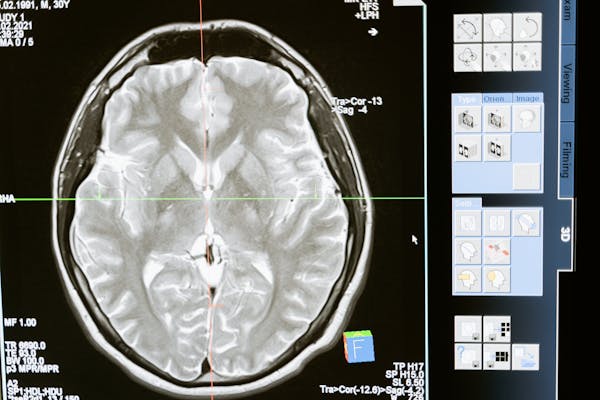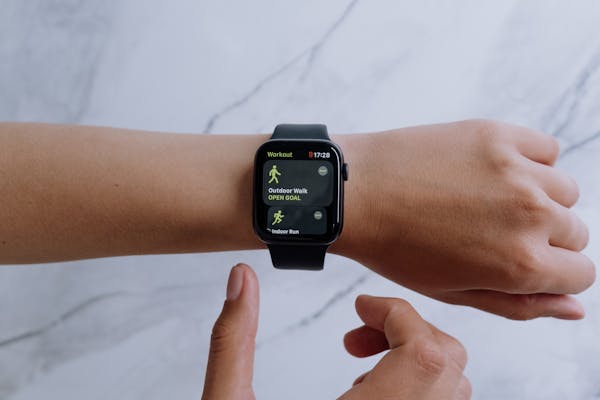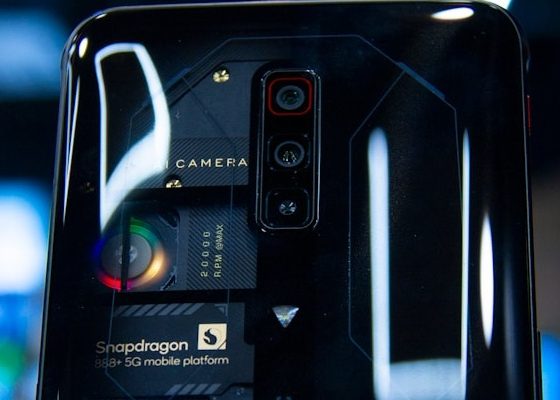
In recent years, technology has revolutionized virtually every industry, and healthcare is no exception. The integration of advanced technological solutions into healthcare practices has brought about significant improvements in patient care, diagnosis, treatment, and overall healthcare management. This comprehensive article delves into how technology helps healthcare by examining various facets of the healthcare system that have been transformed through technological advancements.
Introduction
Healthcare is a fundamental aspect of human life, directly impacting the well-being and quality of life of individuals. The adoption of technology in healthcare has led to groundbreaking developments that enhance the efficiency, accuracy, and accessibility of medical services. From electronic health records (EHRs) to telemedicine, wearable devices, and artificial intelligence (AI), technology is reshaping the healthcare landscape in profound ways. This article explores these innovations in detail, highlighting how technology helps healthcare in delivering better outcomes for patients and healthcare providers alike.
Electronic Health Records (EHRs)
One of the most significant advancements in healthcare technology is the implementation of electronic health records (EHRs). EHRs have replaced traditional paper-based records, offering a digital platform for storing and managing patient information. This shift has numerous benefits:
- Improved Access to Patient Information: EHRs provide healthcare professionals with real-time access to patient data, enabling them to make informed decisions quickly. This is particularly crucial in emergency situations where timely access to accurate patient information can save lives.
- Enhanced Coordination of Care: EHRs facilitate seamless communication and collaboration among healthcare providers. Multiple specialists can access a patient’s records, ensuring a coordinated approach to treatment. This reduces the risk of errors and ensures that patients receive comprehensive care.
- Increased Efficiency: Digital records streamline administrative processes, reducing paperwork and administrative burdens. This allows healthcare providers to focus more on patient care rather than administrative tasks.
- Data Analytics and Research: EHRs provide a wealth of data that can be used for research and analysis. Researchers can identify trends, track disease outbreaks, and develop new treatment protocols based on the data collected from EHRs.
Telemedicine
Telemedicine has emerged as a powerful tool in healthcare, especially in the wake of the COVID-19 pandemic. It involves the use of telecommunications technology to provide healthcare services remotely. Here’s how technology helps healthcare through telemedicine:
- Increased Accessibility: Telemedicine breaks down geographical barriers, allowing patients in remote or underserved areas to access medical care. This is particularly beneficial for individuals with limited mobility or those living in rural regions.
- Convenience: Patients can consult with healthcare providers from the comfort of their homes, reducing the need for travel and waiting times. This convenience encourages more people to seek medical advice and follow-up care.
- Cost-Effectiveness: Telemedicine reduces healthcare costs by minimizing the need for physical infrastructure and resources. It also decreases the need for hospital visits, which can be expensive.
- Continuous Monitoring: Remote monitoring devices enable healthcare providers to track patients’ health conditions in real time. This is especially useful for managing chronic diseases, where continuous monitoring can prevent complications and hospitalizations.
Wearable Health Devices

Wearable health devices have gained popularity as tools for monitoring and managing health. These devices, such as smartwatches and fitness trackers, provide real-time data on various health metrics. Here’s how technology helps healthcare through wearable devices:
- Personalized Health Monitoring: Wearable devices allow individuals to monitor their health metrics, such as heart rate, blood pressure, and activity levels. This data can be shared with healthcare providers to tailor personalized treatment plans.
- Early Detection of Health Issues: Continuous monitoring can detect abnormal patterns or early signs of health issues. For example, a sudden increase in heart rate may indicate a potential cardiac event, prompting timely medical intervention.
- Encouraging Healthy Habits: Wearable devices often come with features that encourage healthy habits, such as reminders to exercise, track sleep patterns, and monitor dietary intake. These features promote a proactive approach to health management.
- Chronic Disease Management: Wearable devices are particularly useful for managing chronic diseases such as diabetes and hypertension. They enable patients to track their condition and make necessary adjustments to their lifestyle or medication.
Artificial Intelligence (AI) and Machine Learning
Artificial intelligence (AI) and machine learning are revolutionizing healthcare by enabling more accurate diagnoses, personalized treatment plans, and efficient administrative processes. Here’s how technology helps healthcare through AI:
- Accurate Diagnoses: AI algorithms can analyze medical images, such as X-rays and MRIs, with high accuracy, often surpassing human capabilities. This leads to earlier and more accurate diagnoses of conditions like cancer and neurological disorders.
- Predictive Analytics: AI can analyze large datasets to predict disease outbreaks, patient outcomes, and potential complications. This information helps healthcare providers take preventive measures and allocate resources effectively.
- Personalized Treatment Plans: AI can analyze a patient’s genetic information, medical history, and lifestyle factors to develop personalized treatment plans. This approach increases the effectiveness of treatments and reduces adverse effects.
- Administrative Efficiency: AI-powered systems can automate administrative tasks, such as scheduling appointments, processing insurance claims, and managing patient records. This reduces the administrative burden on healthcare providers and improves overall efficiency.
Robotics in Surgery
Robotic-assisted surgery has transformed the field of surgery by enhancing precision, reducing invasiveness, and improving patient outcomes. Here’s how technology helps healthcare through robotic surgery:
- Enhanced Precision: Robotic systems provide surgeons with enhanced precision and control during procedures. This is particularly beneficial in delicate surgeries where precision is critical.
- Minimally Invasive Procedures: Robotic-assisted surgeries are often minimally invasive, involving smaller incisions and less tissue damage. This results in reduced pain, shorter hospital stays, and faster recovery times for patients.
- Improved Visualization: Robotic systems offer high-definition, 3D visualization of the surgical area. This allows surgeons to perform complex procedures with greater accuracy and confidence.
- Reduced Risk of Complications: The precision and control offered by robotic systems reduce the risk of complications during surgery. This leads to better outcomes and fewer postoperative issues.
Genomic Medicine
Genomic medicine involves the use of genetic information to guide medical decisions and treatments. Advances in technology have made genomic medicine more accessible and impactful. Here’s how technology helps healthcare through genomic medicine:
- Personalized Medicine: Genomic information allows healthcare providers to develop personalized treatment plans based on an individual’s genetic makeup. This approach increases the effectiveness of treatments and reduces adverse reactions.
- Disease Prevention: Genetic testing can identify individuals at risk of developing certain diseases, enabling early intervention and preventive measures. For example, individuals with a genetic predisposition to certain cancers can undergo regular screenings to detect cancer early.
- Pharmacogenomics: Genomic information can guide the selection of medications and dosages based on an individual’s genetic profile. This ensures that patients receive the most effective and safe medications.
- Research and Development: Genomic data contributes to research efforts aimed at understanding the genetic basis of diseases. This knowledge can lead to the development of new therapies and treatments.
Big Data and Analytics
The healthcare industry generates vast amounts of data daily. Big data and analytics technologies are harnessing this data to drive improvements in healthcare delivery. Here’s how technology helps healthcare through big data and analytics:
- Improved Patient Outcomes: Big data analytics can identify patterns and trends in patient data, leading to better clinical decision-making and improved patient outcomes. For example, analyzing patient data can help identify factors contributing to hospital readmissions and implement strategies to reduce them.
- Operational Efficiency: Analytics can optimize hospital operations by predicting patient admission rates, managing staff schedules, and reducing wait times. This improves the efficiency of healthcare facilities and enhances patient satisfaction.
- Disease Surveillance: Big data analytics can track disease outbreaks and monitor public health trends. This information helps public health authorities respond to epidemics and pandemics effectively.
- Cost Reduction: Analyzing healthcare data can identify areas of inefficiency and waste, leading to cost-saving measures. For example, predictive analytics can reduce the use of unnecessary tests and treatments.
Mobile Health (mHealth) Applications
Mobile health (mHealth) applications are transforming the way patients manage their health and interact with healthcare providers. These apps provide a range of services, from appointment scheduling to remote consultations and health monitoring. Here’s how technology helps healthcare through mHealth applications:
- Patient Empowerment: mHealth apps empower patients to take control of their health by providing easy access to information and tools for self-management. Patients can track their health metrics, set medication reminders, and access educational resources.
- Remote Consultations: mHealth apps facilitate remote consultations with healthcare providers, reducing the need for in-person visits. This is particularly beneficial for routine check-ups and follow-up appointments.
- Chronic Disease Management: mHealth apps offer tools for managing chronic diseases, such as diabetes and asthma. Patients can log their symptoms, monitor their condition, and receive personalized advice from healthcare providers.
- Health Education: mHealth apps provide educational resources on various health topics, promoting health literacy and encouraging preventive care. Patients can access information on nutrition, exercise, and disease prevention.
Blockchain Technology
Blockchain technology, known for its use in cryptocurrencies, is making its way into healthcare, offering secure and transparent solutions for managing patient data. Here’s how technology helps healthcare through blockchain:
- Data Security: Blockchain provides a secure and tamper-proof way to store patient data. Each transaction is encrypted and added to a block, ensuring that data cannot be altered or deleted without detection.
- Interoperability: Blockchain facilitates the seamless exchange of patient data between different healthcare providers and systems. This improves care coordination and ensures that patients receive consistent and accurate treatment.
- Patient Control: Blockchain gives patients greater control over their health data. Patients can grant and revoke access to their data, ensuring that only authorized individuals can view their information.
- Clinical Trials: Blockchain can streamline the management of clinical trials by ensuring the integrity of data and simplifying the consent process. This increases the transparency and efficiency of clinical research.
Virtual Reality (VR) and Augmented Reality (AR)
Virtual reality (VR) and augmented reality (AR) are emerging technologies with significant potential in healthcare. These technologies offer immersive experiences that can enhance medical training, patient care, and treatment. Here’s how technology helps healthcare through VR and AR:
- Medical Training: VR and AR provide realistic simulations for medical training, allowing students and professionals to practice procedures in a risk-free environment. This enhances their skills and confidence.
- Pain Management: VR can be used as a tool for pain management by distracting patients from their pain during procedures or recovery. This is particularly useful for patients undergoing painful treatments or surgeries.
- Surgical Planning: AR can assist surgeons in planning and performing complex procedures by overlaying digital images on the patient’s body. This provides real-time guidance and improves surgical precision.
- Patient Education: VR and AR can be used to educate patients about their conditions and treatment options. For example, patients can visualize how a surgery will be performed or understand the progression of a disease.
Internet of Medical Things (IoMT)
The Internet of Medical Things (IoMT) refers to a network of connected devices that collect and transmit health data. These devices range from wearable sensors to smart medical equipment. Here’s how technology helps healthcare through IoMT:
- Real-Time Monitoring: IoMT devices enable real-time monitoring of patients’ health conditions, providing continuous data to healthcare providers. This is particularly valuable for patients with chronic diseases or those recovering from surgery.
- Remote Patient Management: IoMT allows healthcare providers to remotely monitor and manage patients, reducing the need for hospital visits. This is especially beneficial for elderly patients or those with mobility issues.
- Data-Driven Insights: IoMT devices generate vast amounts of data that can be analyzed to gain insights into patient health and treatment outcomes. This data-driven approach leads to more informed clinical decisions.
- Improved Medication Adherence: IoMT devices can remind patients to take their medications and track their adherence. This ensures that patients follow their treatment plans and improves health outcomes.
Conclusion
The integration of technology into healthcare has ushered in a new era of medical practice, characterized by improved patient outcomes, increased efficiency, and enhanced accessibility. From electronic health records to telemedicine, wearable devices, artificial intelligence, and beyond, the impact of technology on healthcare is profound and far-reaching. As we continue to embrace and innovate in the realm of healthcare technology, the potential for further advancements is limitless. Ultimately, understanding how technology helps healthcare is crucial for realizing a future where high-quality medical care is accessible to all.














